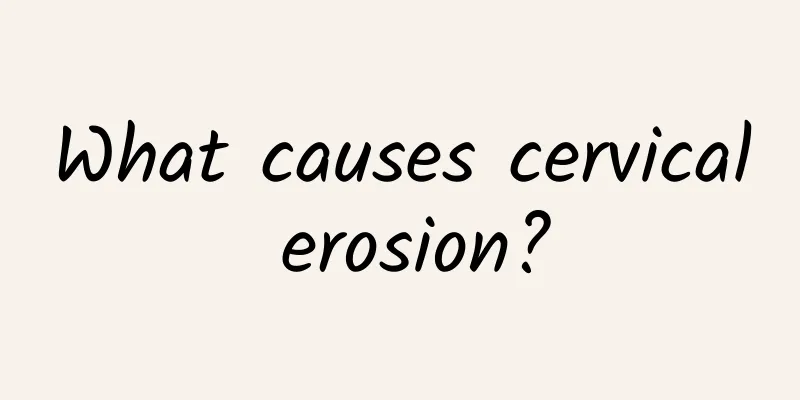What causes cervical erosion?

|
There are many causes of cervical erosion, which may be related to genetics, environmental factors, physiological factors, trauma and other diseases. Starting from raising awareness of self-health management, understanding these possible causes is of great significance for prevention and treatment. 1) Genetic factors: Some women may be more susceptible to abnormal changes in cervical tissue due to family inheritance. The inheritance of related genes may make the local structure or function of the cervix more susceptible to external stimulation and erosion. In this case, regular gynecological examinations are required to monitor health changes in a timely manner. 2) Environmental factors: Frequent gynecological infections, unclean sexual life or long-term exposure to poor hygiene are common external causes of cervical erosion. For example, long-term infection of the cervix by bacteria, viruses or other pathogens may lead to cervical tissue ulceration under inflammatory stimulation. Maintaining good personal hygiene habits, avoiding unsafe sexual behavior and using safe contraceptive measures can reduce the risk. 3) Physiological factors: The special structure of cervical tissue determines that it is more sensitive to changes in hormone levels. Long-term estrogen secretion disorders, irregular menstrual cycles or endocrine disorders may increase the probability of cervical erosion. It is recommended to establish a regular work and rest schedule and maintain a healthy and balanced diet to improve endocrine regulation. 4) Trauma: Repeated external stimulation or damage to the cervical tissue, such as multiple miscarriages, frequent intrauterine operations or childbirth trauma, will weaken the cervical recovery ability and further develop into erosion. For women who frequently need intrauterine operations, they should give priority to choosing specialized medical institutions for the procedures and try to reduce the risk of unnecessary trauma. 5) Pathological diseases: Chronic cervicitis is one of the main causes of cervical erosion. Long-term inflammation can damage the normal function of the cervical mucosa and cause erosion. Some sexually transmitted infections, such as HPV virus infection, may also lead to further deterioration of cervical lesions and even cause the occurrence of cervical precancerous lesions. Regular TCT and HPV screening and active treatment when abnormalities are found are effective solutions to this cause. Understanding the causes of cervical erosion can help better prevent and treat it. If related symptoms occur, such as abnormal vaginal discharge and contact bleeding, it is recommended to see a doctor as soon as possible to identify the cause. Through reasonable personal management and medical intervention, the health risks brought by cervical erosion can be effectively reduced and the quality of life can be improved. |
<<: Is surgery for cervical erosion harmful to the body?
>>: Can I get pregnant normally with primary amenorrhea?
Recommend
Common symptoms of several typical uterine fibroids
Uterine fibroids are a common disease in life. Mo...
What are the symptoms of bilateral polycystic ovaries?
What are the obvious symptoms of bilateral polycy...
What causes irregular menstruation? Is irregular menstruation related to smoking?
Irregular menstruation not only threatens everyon...
What should I do if I have uterine fibroids? What are the women who are prone to uterine fibroids?
Uterine fibroids are a common disease in women of...
Burn fat and relieve worries! Drink a cup of vitality tea on the day after delivery
Pregnancy and childbirth are supposed to be happy...
Is it okay to take medicine for cervical precancerous lesions?
What are the drugs for treating cervical precance...
What are the symptoms of cervicitis?
There are many reasons for cervical inflammation,...
What is pregnancy complicated with uterine fibroids? How to deal with pregnancy complicated with uterine fibroids
How should pregnancy complicated with uterine fib...
How to prevent recurrence of ovulation bleeding
How to prevent ovulation bleeding from recurring?...
What should I pay attention to when having cervical warts during menstruation?
There are many diseases in life, big and small, i...
14 versions of the bill to block clenbuterol sent to committee
The government plans to conditionally open up imp...
Can I detect an abortion?
After artificial abortion, it can usually be dete...
How to treat subserosal uterine fibroids? What are the traditional Chinese medicine treatments for subserosal uterine fibroids?
Uterine fibroids are one of the common gynecologi...
Abnormal vaginal discharge and dull abdominal pain
Abnormal vaginal discharge accompanied by dull ab...
Is obesity caused by the gluttonous monster? Beware of food addiction
Most researchers believe that 10% to 15% of peopl...









